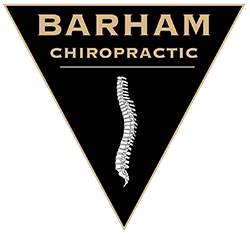Exploring Techniques of Spinal Decompression Therapy by Chiropractors in Sacramento CA

It’s a great day at Barham Chiropractic!
We're glad to have you here at the Sacramento CA Chiropractor Office, where your well-being is our top concern. Today, we'll be delving into the topic of "Spinal Decompression Therapy." This treatment aims to alleviate discomfort and enhance your overall comfort.
Spinal Decompression is a specialized approach we offer to help reduce pain and enhance your overall well-being. Our primary objective is to assist you in feeling better and more content. We recognize that every stride toward improved well-being contributes to a better quality of life.
Let's embark on this learning journey together to understand Spinal Decompression and its potential to enhance your well-being. We are committed to guiding you through every step, ensuring your comfort and understanding are paramount.
Understanding Spinal Decompression Therapy in Sacramento CA
Spinal decompression therapy is a non-surgical treatment that aims to relieve back and neck pain caused by conditions such as herniated discs, sciatica, and spinal stenosis. This therapy involves the use of a traction table or a specialized machine to gently stretch the spine and create negative pressure within the affected area. By doing so, it helps to reduce the pressure on the nerves and discs, promoting the movement of oxygen, water, and nutrient-rich fluids into the spine. In addition, it stimulates the release of natural pain-relieving substances in the body, such as endorphins. Spinal decompression therapy can be an effective and safe alternative to surgical treatments for many patients, offering the potential for long-lasting pain relief and improved mobility. However, it is important to consult with a healthcare professional to determine if this treatment is suitable for your specific condition.
Traditional vs. Modern Approaches: Comparing Spinal Decompression Techniques
Spinal decompression techniques are used to relieve pressure on the spinal cord or nerves, which can cause symptoms such as back pain, neck pain, and numbness or tingling in the extremities.
There are two main approaches to spinal decompression:
- Traditional spinal decompression techniques typically involve invasive surgical procedures. This may include laminectomy, which involves removing part of the vertebral bone to relieve pressure on the spinal cord or nerves, or discectomy, which involves removing all or part of a herniated disc that is pressing on the nerves. These procedures are typically performed in a hospital setting and require a significant recovery period. While traditional techniques may be effective in relieving symptoms, they carry the risks and potential complications associated with surgery.
- Modern spinal decompression techniques, on the other hand, are non-invasive and do not require surgery. One popular modern technique is spinal traction, where a patient's spine is gently stretched using a traction table or a specialized device. This stretching helps to create negative pressure within the disc, allowing any herniated or bulging material to be reabsorbed back into the disc. Another modern approach is spinal decompression therapy, which uses a computer-controlled traction device to apply precise amounts of distraction force to the spine. This therapy can be customized to each patient's condition and offers a less invasive alternative to traditional surgeries.
Exploring Hands-On Techniques: Manual Spinal Decompression Methods
Manual spinal decompression methods are hands-on techniques that are used to relieve pressure on the spine and alleviate symptoms associated with spinal compression. These techniques aim to create space between the vertebrae, reduce inflammation, and improve overall spinal health.
One common manual spinal decompression technique is the manual traction method. This technique involves applying gentle pulling or stretching force to the spine to create space between the vertebrae. The therapist or chiropractor may use their hands to apply the traction force or use specialized equipment to assist in the process. Manual traction can help to relieve pressure on compressed discs and nerves, reducing pain and improving mobility.
Another manual spinal decompression technique is spinal manipulation. This technique involves using the hands or specific tools to apply controlled force to the spine, with the goal of realigning vertebrae and restoring proper spinal function. Spinal manipulation can help to relieve nerve impingement, reduce inflammation, and improve range of motion. In addition to these techniques, manual spinal decompression may also involve soft tissue manipulation, such as massage or myofascial release, to relieve tension in the muscles and surrounding tissues. This can help to improve spinal alignment and reduce pressure on the spine.
Innovations in Spinal Decompression Technology: Cutting-Edge Solutions
Spinal decompression technology has come a long way in recent years, with cutting-edge innovations providing new and improved solutions for patients suffering from spinal conditions. One such innovation is the use of computer-assisted spinal decompression systems, which allow for precise and targeted treatment. These systems use advanced algorithms and sensors to create a customized treatment plan for each individual patient. By monitoring the patient's progress in real-time, the systems can adjust the treatment parameters to provide optimal results.
Furthermore, recent research in the field has contributed valuable insights into the overall effectiveness and cost-efficiency of different spinal decompression approaches. The Surgical Timing in Acute Spinal Cord Injury Study (STASCIS) compared the cost-effectiveness of early versus delayed surgical decompression of the spinal cord for acute traumatic cervical spinal cord injuries. The study's findings indicated that early decompression was more cost-effective, resulting in significant cost savings per quality-adjusted life year gained for both complete and incomplete spinal cord injury cases. This aligns with the direction modern spinal decompression techniques are taking, emphasizing non-invasive and personalized treatments that prioritize patient outcomes and economic efficiency.
Unlike traditional surgical methods, non-surgical spinal decompression is a safer and less invasive option for patients. Additionally, advancements in medical imaging technology have greatly improved the accuracy and effectiveness of spinal decompression treatments. Techniques such as magnetic resonance imaging (MRI) and computed tomography (CT) scans allow doctors to better visualize the spinal structures and identify the root causes of pain and discomfort. These innovations have revolutionized the field of spinal decompression, providing patients with more effective and comfortable treatment options.
Is it safe to decompress your spine?
Decompressing the spine can be safe and beneficial under the guidance of a qualified healthcare professional, such as a chiropractor or physical therapist. Certain types of spinal decompression techniques, like traction or spinal manipulation, may be used to relieve pressure on the spinal discs, nerves, and other structures. However, it is important to consult with a healthcare professional who can assess your specific condition and recommend appropriate treatment options. Improperly performed spinal decompression or attempting to do it without professional guidance can potentially cause harm or exacerbate underlying conditions.
Thank you for being a part of our exploration into "Spinal Decompression Therapy" We've learned how this special technique can help people feel better by reducing pain and bringing comfort.
If you want to try Spinal Decompression Chiropractic and become a new patient at our clinic, please reach out to us during our office hours or by filling out the contact information on our New Patient Offer.
Thank you for choosing Barham Chiropractic – where your well-being truly matters.
Reference
Clinically reviewed by Steven Barham, D.C.
- Updated on August 11, 2023
This site is for informational and educational purposes only. The information contained herein does not constitute the rendering of insurance advice, chiropractic healthcare advice, or the provision of treatment or treatment recommendations by our providers. Browsing this site does not establish a professional relationship with Barham Chiropractic or any member of the Barham Chiropractic staff.
If you have any concerns, questions, or comments about this article please reach out to our content moderation team at:
barhamcontent@gmail.com
You can also reach out to our Sacramento CA Chiropractor Office via phone call at (916) 542-6273 during office hours.
OFFICE HOURS
Monday
7:15am - 11:45am
2:00pm - 5:45pm
Tuesday
8:00am - 11:45am
Wednesday
7:15am - 11:45am
2:00pm - 5:45pm
Thursday
8:00am - 10:45am
Friday
7:15am - 11:45am
2:00pm - 5:45pm
Saturday & Sunday
Closed
Barham Chiropractic
3441 Arden Wy
Sacramento, CA 95825




